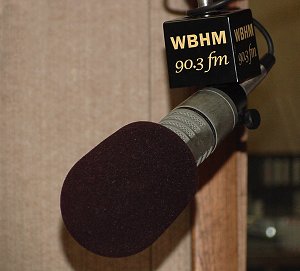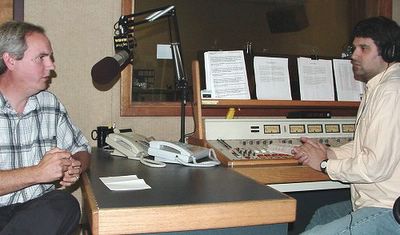
(Photo: That's me in the yellow/green jacket past the crux on Thin Slabs Direct (5.7+).)
In my last post I discussed (and expressed skepticism about) several supposed 5.8 sandbags in the Trapps.
Then on Friday of last week, climbing with a new partner Matt, I was reminded of some other sandbags that are not so easily dismissed.
These climbs are like landmines for the unsuspecting leader. They promise smooth, moderate sailing but instead deliver moments of puzzlement and sketchitude.
I speak, of course, of those bewildering oddites otherwise known asGunks 5.7's.
LastFridayMatt and Iwerehoping tojump onBirdie Party, but we found it occupied. Matt suggested wedo Anguish instead since it was open and neither of us had done it. It seemed like a good idea to me. I intended to link the first two pitches in one and take us all the way up to the GT Ledge. Matt would take the crux 5.8 pitch to the top. I thoughtthe first two pitcheslooked pretty easy, except for the new crux of the first pitch that Dick Williams described in his 2004 guidebook. Instead of the traditional route, which moved to the right over a flake/corner at 5.4, Dick now recommends a roof escape to the left at 5.7-.
I thought I remembered a thread on Gunks.com where folks had complained that this roof escape felt much harder than 5.7. (I can't find such a thread now, so maybe it never existed.) But I wasn't worried. I thought it might feel like a 5.8, but so what? I'd be fine. How bad could it be?
Then I got up there under the roof and found out.
I had pro in the corner but it was all the way at the back. I tried to get something in the little flaring notch at the lip of the roof but I couldn't get anything on my rack to stick.
Then I started to pull over the roof, looking for holds, but whatever holds there were seemed very far away.
So I retreated a bit to a stance and thought it over. Dick said escape left, I realized. He didn't say to pull the roof directly.
Goingback up, Itried to follow Dick's orders and escape left. I got a hold of some small crimps and moved around the outside arete. But this put me at a really pumpy stance and the next move up was far from certain. Plus my pro was over to the right and back in the corner. I didn't like this at all. I retreated again.
Three or four times I tried to make my escape but on each occasion I didn't like the move or the potential fall so I came back. And then, defeated,I finally said "screw it" and finished the pitch the 5.4 way.
What a way to start a new climbing partnership! Bailing on a 5.7-.
Matt led the 5.8 pitch three of Anguish and it is really very good. It has some nice crux moves up to the overhang; then the overhang itself is a bit easier. The rest of the way is even more casual but thegear is a little thin. The topout requires a few easy slab moves above your pro.
I wouldn't bother to repeat pitches one and two of Anguish-- the quality moments are few, even if you include the part I skipped--but if I were descending from another climb using the nearby Three Pines rappel routeI woulddefinitely consider running up the third pitch of Anguish again.The pitchbegins on the GT Ledge right around the corner from the bolted anchor, and once you top out it's an easy walk just a few yards over to the bolts on top of the cliff for the descent.
Later in the day, after I'd redeemed myself a bit and led some harder climbs, I mentioned how embarrassed I was to have begun the day by chickening out on a 5.7-. Matt responded that he'd taken a fall at the tricky crux move of Baskerville Terrace (5.7) just a few weeks before-- and thisright after a successful lead of Roseland (5.9)! So I didn't have to feel too bad. He knew what I was going through.
Those pesky sevens!
There sure seem to be a lot of "problem" sevens at the Gunks, no? I've certainly had more 5.7difficulties than 5.8 difficulties. I've never bailed on a 5.8 lead. But here I abandoned Anguish pitch one, andI also remember a couple of seasons ago trying the opening move to Trapped Like a Rat (5.7) and then abandoning that one too. And don't even get me started on that stupid grease-pole-of-a-sandbag Laurel. Come to think of it, I once bailed on a 5.8: Drunkard's Delight (5.8-), but that route too wasuntil recentlyconsidered a 5.7+!
We finished our day last Friday with perhapsthe mother of all 5.7 sandbags: Thin Slabs Direct.
Matt led the 5.7 variation to pitch one, and wouldn't you know it, as he approached the end of the vertical crack that marks the early part of the route, I heard him muttering "Why is this so tricky??"
And then "Watch me here!"
But he sketched through the hard part and then took the lead all the way to the GT Ledge.
When it was my turn to follow I was kind of shocked at how thin the first twosteps off the ground were. I wasn't sure I could even get started on the pitch. But we all know that no matter how hard the first move is, it doesn't count as part of the difficulty rating in the Gunks. Once I got my feet on the wall and my hands in the crack, I thought the climbing was enjoyable and, yes, kind of stiff for 5.7.
When I got near the top of the crack I saw what Matt had been concerned about. The hands were good, but the feet were smeary.I knew with one morereach the angle would ease off; the harder variation start would be over.As I smearedand reached up with the security of the toprope,I thought:"nice lead!"
And: "5.7??"
Once Igot tothe GT LedgeI had to confront the Thin Slabs Direct finish, which is supposedly 5.7+. This variationhas the distinction of being the only "direct" finish I can think of that is actually substantially less direct than the regular route. It is in fact the very antithesis of "direct." The whole point of the variation is to force the leader to traverse to the right for fifteento twenty feet out of the way, over aterrifying drop, with slippery hands and no real footholds to speak of.
I first attempted this pitch in . Before I got to the Direct finish, I led Sente, onsight, to start the climb. This wasmy first 5.9 lead ever, which made me very proud. Then I joined Thin Slabs up to the GT Ledge and promptly got thoroughly humbled by Thin Slabs Direct. I remember being so pumped as I attempted it. Ifound itvery difficult to let go with one hand long enough to clip the three ancient pitons that line the traverse; forget about even attempting to place my own gear. Eventually, after going out and back a few times and taking a hang in the middle,I got to the end of the traverse and managed to pull my body inelegantly onto the shelf on the main face of the cliff. Lying there on the shelf, I was grateful I had survived the climb, but I knew it was no victory.
I wrote a little self-deprecatingpieceabout the experience at the time on Gunks.com (see my post at the bottom of the page). Until last Friday I hadn't been back.
And this time, climbing Thin Slabs Direct felt... well... tough for 5.7, that's for sure. And it was still scary, there's no doubt about that. But mostlyclimbing it againmade me realize how much I've improved. If you hang off that shelf in justthe right way it isn't so pumpy. There are footholds to be found, they just aren't very big.And ifyou turn your body sideways, just so,your feet can really help you, and the clipping isn't so hard. A little technique will get you there.
This time, once I committed to the traverse I moved right through it, coming around the corner without a hitch. It was a great way to end the day, and it nearly erased the bad feelings I got from pitch one of Anguish.
But still, after it was over, there was no escaping one conclusion: Thin Slabs, with both variations, isafreaking HARD 5.7. I mean really, what is it with those Gunks sevens?









 This geranium is sitting on a table on our deck and you can see the Sandia Mountains that we can see any time we are in our backyard.
This geranium is sitting on a table on our deck and you can see the Sandia Mountains that we can see any time we are in our backyard.









 First cold lead of day
First cold lead of day


 I don't always go with the fall shot, but this one I think retains all the energy and body tensionof the move.
I don't always go with the fall shot, but this one I think retains all the energy and body tensionof the move. I reckon if you hold that exact pose, but get a bit closer to the rock, you should be able to pull that move off.
I reckon if you hold that exact pose, but get a bit closer to the rock, you should be able to pull that move off.
 Everyone deserves a Lei on their birthday.
Everyone deserves a Lei on their birthday. The statistics on strangulation rates of tropical island belayers is higher than you might expect.
The statistics on strangulation rates of tropical island belayers is higher than you might expect.






